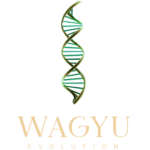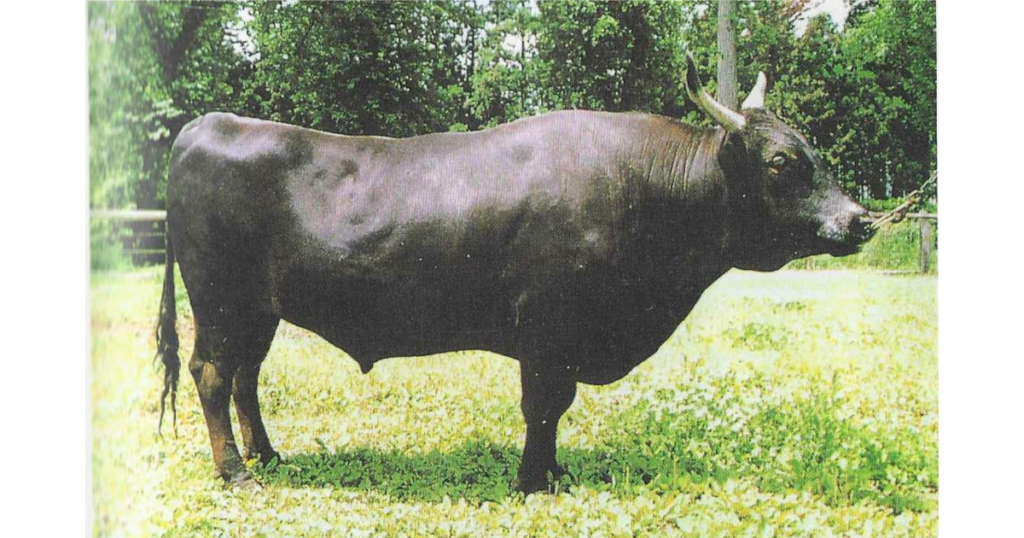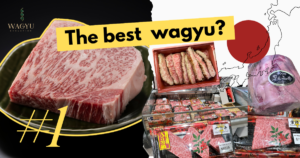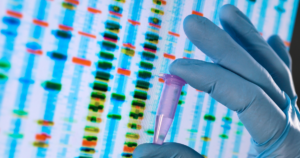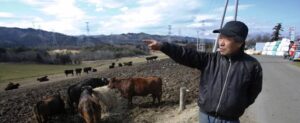Shigeshigenami: The Representative Bull of Premium Wagyu
Table of Contents
* Note: This is not a direct translation of Kenichi Ono’s “Top 100 Famous Beef of Japan [Revised Edition]” but a summary that was written using it as a direct source.
Early Life
The representative bull of premium Wagyu beef, “Shigeshigenami,” was born on April 15, 1972 (Showa 47) at the home of Mr. Setsumi Kusuda in Hamasaka Town, Hyogo Prefecture. The father was Shigekanenami, who was 15 years old at that time, and the mother was Shigemitsu, a progeny of Shigekanenami, giving birth to her sixth calf.
In October of that year, Shigeshigenami became a candidate for a sire bull owned by Hyogo Prefecture and was renamed Shigeshigenami (his childhood name was Masaki). However, in September of the following year, he was transferred from Hyogo Prefecture to a breeding farmer, Mr. Hideo Yodo, and was auctioned off in June 1974 (Showa 49). Shigeshigenami was purchased for an unprecedented 4.5 million yen by Miyagi Prefecture. Being already 3 years old (2 full years), he began supplying semen straws just three weeks after arriving in Miyagi Prefecture and produced about 150,000 straws over more than 13 years until his death from old age on January 23, 1988 (Showa 63).
At that time in Miyagi Prefecture, the three main sires in use were the Taro from the Nakadoi line, Seisei from the progeny of Shigekanenami, and Tomimitsu. Initially, Shigeshigenami was avoided for about three years due to reasons such as “cows of the same lineage were already in use,” “Shigeshigenami’s topline was weak,” and “the progeny’s coat color was jet black, unlike typical Hyogo Prefecture cattle.” However, once the performance of the fattened cattle started to become apparent, the situation changed drastically. From 1980 (Showa 55) onwards, approximately 30% of all calves were sired by Shigeshigenami.
In 1983 (Showa 58), at the All-Japan Meat Cattle Carcass Exhibition (held at the Tokyo Meat Market) held for the first time in ten years, Shigeshigenami’s progeny achieved the remarkable feat of monopolizing the first and second places in the castrated division. Additionally, in the Livestock Improvement Corporation’s meat production ability survey business aggregated in 1985 (Showa 60), Shigeshigenami achieved a high-quality rate (old grade) of 73%, again demonstrating the best performance in Japan. As a result of the dramatic improvements brought about by Shigeshigenami, Miyagi Prefecture’s Wagyu beef was branded as “Sendai Beef,” “Wakayanagi Beef,” “Kashimadai Beef,” and others, mainly in the Kanto region.
Features
Strengths: Marbling, strong genetic power, high fertility, longevity, meat color, fat quality, texture, marbling in the thigh, tight bone structure, facial appearance, gentle and docile temperament, etc.
Weaknesses: Inconsistent marbling, late maturity, topline, rump shape, thigh thickness, shoulder thickness, milk production, growth rate, etc.
In March 1982 (Showa 57), Miyagi Prefecture conducted its first indirect evaluation, and the data for Shigeshigenami and his first successor, Chimo, are as follows (old method):
- Shigeshigenami: DG 0.79 kg, Marbling +3.3, Ribeye Area 46 cm²
- Chimo: DG 0.78 kg, Marbling +3.8, Ribeye Area 40 cm²
Miyagi Prefecture conducted 13 indirect evaluations with 50 sire bulls (including 20 progeny of Shigeshigenami) until 1995 (Heisei 7), selecting 20 types and culling 30 bulls. Recently, there have been instances where economic efficiency of sire bulls is prioritized, leading to the continued use of bulls with extremely favorable indirect evaluation results, or deliberately producing evaluations by using dams with high genetic value. However, I believe that unless we aim to produce beef cattle with a good balance of growth and meat quality by selecting truly capable Wagyu and heifers, we will not be able to compete with the increasing influx of foreign Wagyu in the future.
Pedigree Background
Shigeshigenami is an inbred type sire produced by father-daughter mating of Shigekanenami, a representative bull of the Kumonami line, which had somewhat declined in Hyogo Prefecture. The third-generation ancestor is Netsutoi from the Nakadoi line, and the fourth-generation ancestor is Suzumi, also from the Nakadoi line. The dam, Shigemitsu, is a robust cow with a record of producing 14 consecutive calves (one calf per year), including Shigeshigenami as her sixth calf, indicating high fertility and longevity Breeding cows of the Shigeshigenami line are expected to perform quite well as maternal lines, provided they can clear the growth rate challenges.
Many Shigekanenami line sire bulls have flourished outside of Hyogo Prefecture. Notable bulls include Kazuto, Seifuku, Fukusho, Iwaki (Iwate), Masumi (Akita), Tanifuku 6 (Ibaraki), Shigefuji (Gifu), Otoya 6, First Generation 14, 9 Nakamura, 9 Daiko (Hiroshima), Fukukinami (Shimane), Fukutomi (Nagasaki), and Mokane (Miyazaki).
Major Successor Bulls
Bulls with Shigeshignami as the Sire:
- Shigekatsu (Miyagi Prefecture)
Many of Shigeshigenami’s progeny are active sire bulls, mainly in Miyagi Prefecture. Among them, Shigekatsu is considered the most similar to his father in ability and appearance. This bull, like Shigeshigenami, is a product of inbreeding. His third-generation ancestor, Masaru, is a bull from the Seikoku line in Okayama Prefecture, known for passing on growth and robustness to Shigekatsu, while inheriting excellent meat quality traits from both his father and mother. Due to the large number of calves with black coats and weak toplines (including Shigekatsu himself), he was rarely used until the first half of 1995 (Heisei 7), similar to his father’s early days.
According to field data compiled since 1990 (Heisei 2) by the Sendai Meat Market and Professor Yamagishi of Tohoku University’s Faculty of Agriculture, Shigekatsu’s sales performance in 1995 (Heisei 7) showed an average carcass weight of 433 kg, BMS 9.1, ribeye area of 59 cm², back fat thickness of 8.0 cm, A5 grade rate of 74.2%, and A4 or higher rate of 87.1% (BMS is evaluated on a 12-point scale), matching the results of Shigeshigenami during his prime. With the expected increase in calves, efforts will be made to retain high-quality heifers and address issues related to weak calves.
- Dai 2 Namishige (Miyagi Prefecture)
Along with Shigekatsu, Dai 2 Namishige is another Shigeshigenami progeny sire bull expected to have both meat quality and robustness. With blood from the Yokori line in Hiroshima on the maternal side, it is possible to produce highly economical (growth rate and meat quality) fattening cattle when mated with lines focused on meat quality. Although many avoid using him because his sibling Namishige had very inconsistent results, with the right usage, he is expected to achieve results comparable to Kitakuni 7-8. His field performance at the Sendai market in 1995 (Heisei 7) was an average weight of 415 kg, BMS 9.0, ribeye area of 56 cm², and A5 rate of 70.5%, ranking second only to Shigekatsu among the bulls with more than 10 data points (out of 28 sire bulls evaluated). Due to his slightly strong Arashige tendency, it is advisable to mate him with maternal lines like Kikudani from Iwate. Since 1999 (Heisei 11), the performance of cows with low breeding values (BMS) has declined, so caution is needed.
- Namiso (Miyagi Prefecture), Okushige (Miyagi Prefecture), Shigeshige (Miyagi Prefecture)
Namiso, Okushige, and Shigeshige are all full siblings. Their father is Shigeshigenami, their 2nd generation ancestor is Dai 3 Fukutoku, and their 3rd generation ancestor is Okutani. Their mother, Okumune, is a “super cow,” with three of her offspring becoming sire bulls. All of these sire bulls achieved the highest BMS scores in Japan among their contemporaries nationwide. Dai 3 Fukutoku, from the maternal line, is also a progeny of Shigenami, similar to Shigeshigenami, making these three bulls inbred. Due to the strong genetic influence of the mother, their coat color tends to be a reddish-brown, characteristic of Dai 3 Fukutoku, which is also prevalent in their offspring. However, they are somewhat weak, prone to fat necrosis, and susceptible to summer heat. Thus, it is necessary to pair them with maternal lines that have strong physical attributes during breeding.
Kanesou, a progeny sire bull of Namiso, has been in use since 1995 (Heisei 7) with scores of DG 0.83 and BMS 3.0.
- Shige sakura (Shimane Prefecture)
At a competition held at the Yokohama meat market in May 1996 (Heisei 8), a single fattening steer sired by Shige sakura achieved a top rank and was sold for over 1.8 million yen (BMS 12, maternal grandfather Itoharunami). This success is expected to further increase Shige sakura’s popularity in Shimane Prefecture.
- Kazushige (Livestock Improvement Association, Maebashi)
Kazushige is a unique bull that the association purchased after being used as a natural sire in a Yamagata Prefecture farm. The decision was made after confirming its excellent fattening performance. Despite being highly inbred from Shigenami, this bull is notable for its good growth and dark coat color. However, like Shigeshigenami, it has a slightly weak backline.
Due to his strong genetic influence, it is expected to be effective. Although indirect testing has not been implemented, this bull has been widely used by stakeholders in Japanese Black cattle and F1 breeding programs, and it is a bull to watch in the future.
Breeding Considerations & Recommendations
Sire bulls of the Shigeshigenami line: These bulls tend to lack shoulder width and thigh fullness. Therefore, it is recommended to aim for improvement in depth and shoulder width by crossing with the Itosakura and Yasufuku lines while stabilizing meat quality. Conversely, caution is required when crossing with bloodlines that have narrow loin muscles.
Japanese Black cattle and F1: Both tend to mature late. Extremely shortening the fattening period may lead to performance decline, so moderation is important. In reproduction, care must be taken not to breed too early in age.
Genetic diseases: Since there is little concern about genetic diseases, this bloodline is considered particularly important for the future.
References
小野健一. 日本名牛百選〔改訂版〕(pp.47-57). 肉牛新報社.
